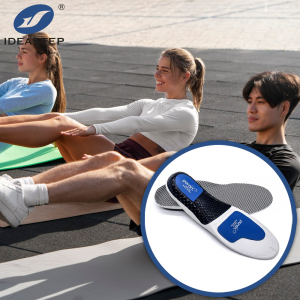
When using PU (polyurethane) insoles in your footwear, there are several important considerations to keep in mind to ensure comfort, hygiene, and overall foot health.
- Allergies and Sensitivities: Some individuals may have sensitivities or allergies to certain chemicals used in the production of PU materials. It’s essential to monitor your skin’s reaction when using PU insoles. If you experience any signs of skin irritation, redness, or discomfort, discontinue use and consult a healthcare professional. Consider seeking alternative insole materials such as natural cork or leather if you have known sensitivities.
- Proper Fit: Ensure that the PU insoles fit properly within your footwear. Insoles that are too large or small can cause discomfort and affect the overall fit of the shoe, potentially leading to foot pain or blisters. Trim the insoles if necessary to achieve a proper fit, following the manufacturer’s guidelines for customization.
- Foot Hygiene: PU insoles may not offer the same level of breathability as natural materials. To maintain foot hygiene, it’s important to regularly remove the insoles from your footwear for airing and cleaning. This can help prevent the buildup of moisture, odor, and the development of fungal conditions. Additionally, consider using moisture-wicking socks to help manage perspiration and maintain foot dryness.
- Durability and Replacement: Keep an eye on the condition of your PU insoles. Over time, the cushioning and support provided by the insoles may diminish with regular use. If you notice signs of wear, compression, or reduced comfort, consider replacing the insoles to maintain optimal support for your feet.
By being mindful of these precautions and incorporating proper foot care practices, you can maximize the benefits of using PU insoles while promoting overall foot health and comfort. If you are interested in PU insoles, you can continue to visit this page (https://www.aideastep.com/pu-insoles/) and tell us your needs.
